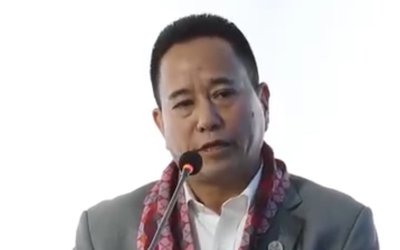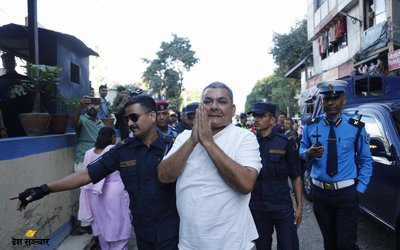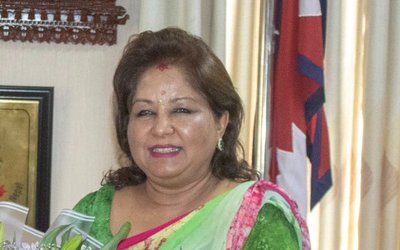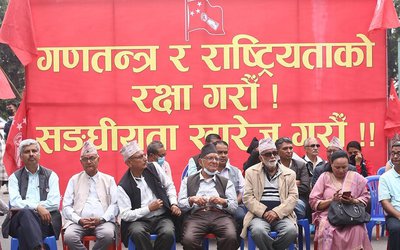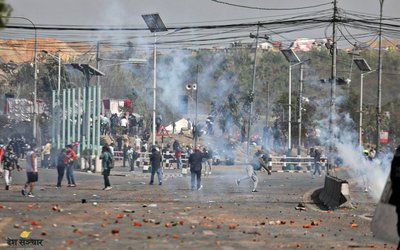Nepal has made significant gains towards meeting the Millennium Development Goals (MDGs)in reducing infant mortality, increasing enrolment rate in primary education and minimizing the percentage of people below the poverty line.
The progress, however, has been lopsided with respect to geographical location, gender and social group. According to Nepal Millennium Development Goals Progress Report 2010, enhancing employment opportunities and eradicating inequality and social exclusion remain major challenges.
“Compared to urban areas, rural areas are still far away from getting the benefits. It is imperative that all of the country’s people reap the benefits of development, including the hard-to-reach poor and those living in remote and inaccessible areas where delivering services is especially difficult. The well being of those who are hardest hit by discrimination, exclusion, poverty and unemployment is a major concern,” said vice chairman of National Planning Commission Jagadish Chandra Pokharel, PhD.
Large numbers of women, dalits and janjatis are still excluded from the national mainstream. The marginalized communities are yet to reap benefits of development. In September, world leaders reconvened to take stock of the progress on Millennium Development Goals, 5 years away from the 2015 deadline.
“Particular countries were singled out for the progress in particular areas with Nepal receiving plaudits particularly for its progress on MDG5, addressing maternal mortality,” said Robert Piper, UN Resident and Humanitarian coordinator for Nepal addressing the UN Day Ceremony.
In making such progress, Nepal has received support from development partners. The support given by UN agencies based in Nepal is very important. Nepal needs more support in coming days to tackle the issues.
“That the work for example, of UNICEF on nutrition or social protection, of UNESCO on mother tongue literacy, of FAOs reach to 100,000 households in the past year with inputs, or UNFPA’s reproductive health support to 70,000 women and girls , of the ILO’s recent support on labor market legislation or UNAIDS’s efforts to strengthen coordination, advocacy and resources for HIV/AIDS, of IFAD’s help to some of the countries’ poorest farmers or the ongoing work of WHO on leprosy and other diseases, have played some part in Nepal’s success. A more equitable distribution of this progress must nevertheless remain a priority for the MDGs to find their true place in Nepal’s peace process,” said Piper.
Despite making big strides, exclusion of large sections of Nepalese needs to be addressed. Although the numbers of people living below the poverty line declines, inequality is increasing alarmingly. “At last year’s UN Day ceremony, I underlined the UN Country Team was anxious to redouble efforts to support the longer-term transition agenda. I referred to the need to reverse Nepal’s rising inequality, bring historically-marginalized groups onto an equal footing, and tackle impunity and strengthening fundamental elements of good governance, such as accountability and transparency. In today’s climate, these important issues continue to compete unsuccessfully against the urgent one for the attention of leaders, policy makers and resources.”
Nepal has been passing through a very critical phase in its history and political instability continues to create hurdles. In this context, the coming days will be more difficult. “Frankly speaking the policy environment for the MDG has been fairly favorable since 2005. The first three years plan 2007-10 also gave high priority to the areas of poverty reduction, inclusion and targeted programs. The current three year plan 2010-13 has stressed the need to reduce the gaps and make plans to achieve the MDGs within the deadline of 2015,” said vice chairman Pokharel. “As Nepal achieved such progress despite unstable politics and violence, we can achieve remaining targets easily.”
Nepal published the first MDG report in 2002 and second in 2005. However, the current report was published after the gap of five years as the period was marked by political instability, change in the country’s economic policies, the absence of local elected bodies, the energy crisis and price hikes. As the development budget heavily focused on post-conflict construction, the investment in other sectors had suffered.
As Nepal is in the process of constitution writing, it is expected to address the issues like social and geographical exclusion. The Constituent Assembly is drafting a constitution that aims to be progressive and inclusive with regard to representation of minorities, ethnicities and geographical areas, both in the governance system and with regard to access to resources.
Another challenging issue is addressing poverty and disparity as Nepal’s peace is determined by it. Nepal has made major progress since 1996 to reduce the level of poverty. Between 1996-04, the level of poverty declined by 11 percentage points from 42 to 31. As Nepal’s poverty reduction process continued, it declined from 31 percent to 25.4 percent between 2005 to 2009.
Although Nepal’s poverty declined, disparities grow between urban and rural areas. Urban poverty was 10 percent in 2004 but rural poverty was 35 percent and now it is eight percent and 22 percent. From regional perspective, mid-western region has still higher prevalence of poor compared to the central region.
According to Millennium Development Goals Progress Report 2010, disparity between genders, castes, ethnicities is also high and persistent. The gap between rich and poor is increasing and high. Thanks to this, there is consequential effect on other sectors such as education, health and environment.
As Nepal’s poverty reduction is basically relying on remittance, it will have adverse effects in case of any changes in the international labor market. “With the country’s transitional political situation as well as remittance dependent economy, it is essential to ask what the impacts of these might be on achievement of the MDGs in 2015 and beyond,” writes the report.
“With the set agenda and targets, we will achieve the targets set by MDGs. The challenge before us is to sustain the present progress and strive for others where we are falling behind,” said vice-chairman Pokharel. Nepal published the first MDG report in 2002 and second in 2005. However, the current report was published after the gap of five years as the period was marked by political instability, change in the country’s economic policies, the absence of local elected bodies, the energy crisis and price hikes. As the development budget heavily focused on post-conflict construction, the investment in other sectors had suffered.
As Nepal is in the process of constitution writing, it is expected to address the issues like social and geographical exclusion. The Constituent Assembly is drafting a constitution that aims to be progressive and inclusive with regard to representation of minorities, ethnicities and geographical areas, both in the governance system and with regard to access to resources.
Another challenging issue is addressing poverty and disparity as Nepal’s peace is determined by it. Nepal has made major progress since 1996 to reduce the level of poverty. Between 1996-04, the level of poverty declined by 11 percentage points from 42 to 31. As Nepal’s poverty reduction process continued, it declined from 31 percent to 25.4 percent between 2005 to 2009.
Although Nepal’s poverty declined, disparities grow between urban and rural areas. Urban poverty was 10 percent in 2004 but rural poverty was 35 percent and now it is eight percent and 22 percent. From regional perspective, mid-western region has still higher prevalence of poor compared to the central region.
According to Millennium Development Goals Progress Report 2010, disparity between genders, castes, ethnicities is also high and persistent. The gap between rich and poor is increasing and high. Thanks to this, there is consequential effect on other sectors such as education, health and environment.
As Nepal’s poverty reduction is basically relying on remittance, it will have adverse effects in case of any changes in the international labor market. “With the country’s transitional political situation as well as remittance dependent economy, it is essential to ask what the impacts of these might be on achievement of the MDGs in 2015 and beyond,” writes the report.
“With the set agenda and targets, we will achieve the targets set by MDGs. The challenge before us is to sustain the present progress and strive for others where we are falling behind,” said vice-chairman Pokharel.
